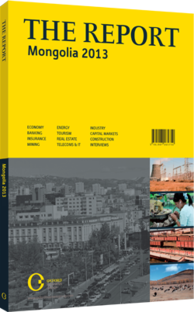This chapter includes the following articles.
Banking

Key reforms implemented in the aftermath of the 2008-09 financial crisis have created a more flexible and resilient banking sector, just as the economy entered a period of slow growth in 2012. While the sector has expanded dramatically over the past two years, banks faced a liquidity squeeze in 2012 that has reduced the pace of growth. Over the long term, however, Mongolia’s leading banks stand to benefit from a rebound, although they will need to mobilise fresh sources of capital to sustain expanding loan books. To encourage higher non-interest income on banks’ balance sheets, provisions have been made for new sources of fee-based revenue, such as the sale of insurance. Larger banks have secured the necessary funds to maintain lending at a slower pace until economic growth rebounds, although persistent inflation is likely to keep nominal lending rates prohibitively high. While foreign banks are positioning themselves in the market through loans, credit lines and equity stakes to support the corporate sector, more sustainable investment is expected to come in the form of securities issuance offshore.
This chapter includes interviews with N. Zoljargal, Governor of the Bank of Mongolia, and M. Bold, President of the Mongolian Bankers Association.

